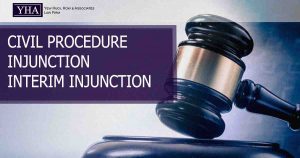
CIVIL PROCEDURE – INJUNCTION – INTERIM INJUNCTION
How’s interlocutory injunction granted? How can it be set aside?
News and Updates

How’s interlocutory injunction granted? How can it be set aside?
1. Background: In 3.4.2025, the United States imposed a sweeping 24% ad valorem tariff on virtually all Malaysian exports to
This legal update explores key provisions of the General Agreement on Tariffs and Trade (GATT 1947), focusing on Article I (Most-Favoured-Nation Treatment), Article II (Schedules of Concessions), Article XX (General Exceptions), and Article XXI (Security Exceptions). Article I mandates that any trade advantage granted by one contracting party to another must be extended unconditionally to all other parties. Article II ensures that imported goods from contracting parties receive treatment no less favourable than that outlined in agreed schedules, while also regulating permissible taxes and charges. Articles XX and XXI provide exceptions for measures necessary to protect public morals, health, security interests, and compliance with domestic laws. The provisions reflect the foundational principles of non-discrimination, transparency, and fair trade, while allowing for limited, well-defined exceptions. This summary is intended to provide a concise reference for businesses and legal practitioners involved in international trade law.
When a motorcyclist claimed he was knocked down in an accident, the Sessions Court ruled in his favor, holding the other rider fully liable. But the insurance company wasn’t convinced. They appealed, arguing that there was no proof of a collision and even raised suspicions of fraud. The High Court took a closer look – and in a dramatic turn, overturned the decision, dismissed the claim, and awarded RM60,000 in costs to the insurer. This case is a stark reminder that in court, assumptions don’t win cases – evidence does.
In Marchand Navigation Co v Olam Global Agri Pte Ltd and Anor [2025] 1 Lloyd’s Rep 92, the Singapore High Court upheld the owners’ right to enforce a lien on sub-freights under Clause 18 of the NYPE 1946 charterparty, ruling that the phrase ‘any amounts due under this charter’ was broad enough to cover unpaid bunker costs. Despite an arbitration clause between the owners and charterers, the sub-charterer was obligated to honor the lien, as it was not a party to the arbitration agreement. This decision reinforces that a properly exercised lien on sub-freights can be an effective tool for owners to recover unpaid sums, even in the presence of disputes between charterers and sub-charterers.
In “The Lila Lisbon” [2025] 1 Lloyd’s Rep 101, the court ruled that a buyer cancelling under Clause 14 of the Norwegian Salesform Memorandum of Agreement is not automatically entitled to loss of bargain damages unless the seller is in repudiatory breach. The case clarifies that failing to deliver by the cancellation date does not constitute non-delivery under the English Sale of Goods Act 1979, as the clause grants the buyer a discretionary right rather than imposing a firm obligation on the seller. This decision highlights the importance of precise contract drafting, particularly in ship sale agreements, where buyers must ensure that compensation for market loss is explicitly provided for.
A 10-year-old child was abducted outside a tuition center, held captive, and released only after a RM1.75 million ransom was paid. The appellants were arrested following investigations, with their statements leading to the recovery of a portion of the ransom money. Despite denying involvement, they were convicted under the Kidnapping Act 1961 and sentenced to life imprisonment and ten strokes of the whip. Their appeal challenged the identification process, the validity of the charge, and the admissibility of evidence, but the court found the prosecution’s case to be strong, ruling that the appellants had acted in furtherance of a common intention and were equally liable for the crime.